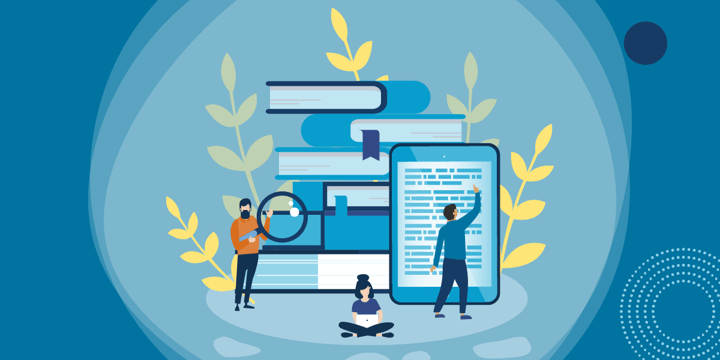Right now, information science professionals, along with most of the rest of the world, are rightly concerned about and focused on COVID-19. Homemade masks have entered our daily wardrobes (when we make the rare journey out). Official forecasters are comparing the pandemic in magnitude to the attack on Pearl Harbor and 9/11. COVID-19 has changed our society in ways large and small and also in ways that may not be apparent in the short term. One of these changes, among many, is the amount of time people have spent alone, or in the company of a few family members, while practicing social distancing and under stay-at-home orders.
Being under just such a stay-at-home order myself here in the Kansas City metro area has, among other things, led to deep dives into those books and music that I have been putting off, among them the award-winning musical Hamilton. For those not yet exposed to this magnificent work of art, it includes a piece called What Comes Next? sung by King George III (as portrayed by Jonathan Groff). This song serves as a reminder to the newly freed United States of America that the future is unknown and the decisions they make in the future will be big and momentous.

Preparing for a New Society
Listening to this song during the coronavirus public health crisis certainly has put a different spin on this short song than it had when it was first written and performed. That being said, though, the question of "what comes next?" could not be more timely and appropriate. So, even with an unknown future ahead of us, it might be useful at this time to consider how libraries and librarians might start considering the future.
Whether it is soon or not, it is almost certain that our libraries will reopen and our patrons will return. It would be rash, almost foolish, to assume, though, that our libraries will operate in the same sort of society as before. Rather, as information science professionals, we must ready ourselves for a changed society, one with new needs and rearranged priorities. As I see it, here are some of the things that might come next.
A Renewed Emphasis on Distance Services
While digital services like e-books already had a firm foothold in most public libraries, this current public health crisis will likely lead to an increase in the call for virtual means of interactions with librarians. Some of this is already being piloted by creative librarians who have turned to YouTube for 24/7 story times and to Zoom to continue the facilitation of their book clubs.
Now that this book has been opened and these programs have proved successful, it will be hard to return to primarily face-to-face interactions. However, I believe that it won't only be digital initiatives that will see an increase. Indeed, it wouldn't surprise me to see an increase in calls from patrons to institute more drive-through options for checking books in and out, for example. As people become more comfortable with social distancing and sticking to smaller groups, it seems logical to me that some will want less physical contact with libraries and those who work there.
Libraries as Health Information Resource Centers
While it was certainly not uncommon for public libraries to encounter health-related questions before, I can only imagine a surge in post-COVID-19 questions. This will place renewed pressure on, for example, professional development opportunities that focus on consumer health resources and more awareness on how librarians are trained to respond to these sorts of inquiries. This is also an area where library schools can step into the void. If patron demand for more in-depth health information becomes a long-term trend, there may be pressures to create curriculums that are more responsive to the new demands. Courses on disaster preparedness or consumer health may become as common as courses on information technology.
A Redefinition of What a Library Even Is
This may be one of the most long-term effects of COVID-19 on information and library science. And it is one that I have the hardest time forecasting. Redefining what a library is is massive and speaks to every element — what information sources should libraries provide, what should training look like for the next generation of information science professionals, what priorities should directors have? The list goes on and on, but there is a silver lining. That silver lining is that libraries are sui generis when it comes to change. One need only have a passing knowledge of library history to understand that libraries in 2020 are not what libraries were in 1720, nor in 1920, nor even in 2000. I have every confidence that libraries will embrace this opportunity to change and, in most cases, come out stronger in serving patrons and communities.
In many ways, the coronavirus and its attendant COVID-19 disease have been a crisis with little precedence. People have had to rapidly adapt to a new and dangerous world. Healthcare workers are becoming front-line warriors in a public health war. In the midst of all this, librarians and information science professionals should come to understand that they can (and should) play a vital role in the new society that will come after this public health crisis. Before then, though, now is the valuable time to lay a foundation and ask the million-dollar question — what comes next?
About the Author
Nick Dean is a second-year master's student in the School of Library and Information Management (SLIM) at Emporia State University. Nick currently works full time as an academic advisor at a medical school and as a part-time employee at a medical library in Kansas City.
This article was originally published by Hack Library School under a Creative Commons (CC BY-NC-SA 3.0) license.







